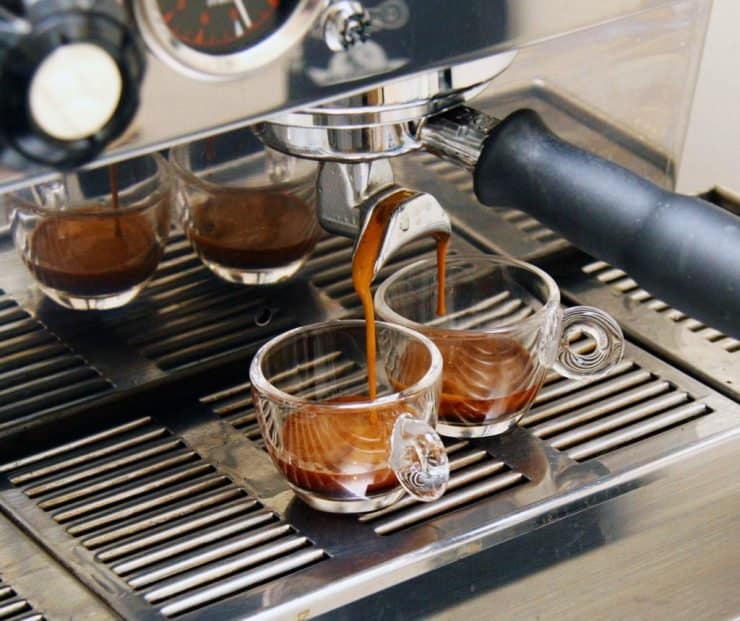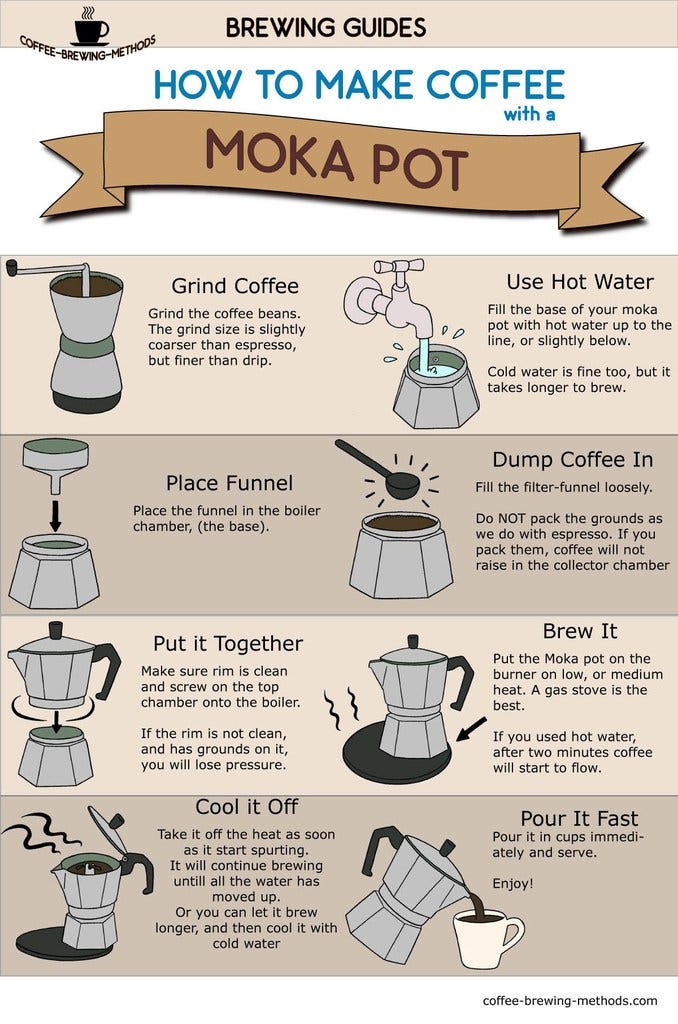Coffee Brewing Methods: Unlocking the Secrets to the Perfect Mug in the house
Wiki Article
The Science Behind Coffee Brewing: Just How Temperature and Time Affect Your Drink
Comprehending the scientific research behind coffee brewing discloses that temperature and time are not mere variables but pivotal components that determine the beverage's flavor profile and total high quality. As we explore the subtleties of these aspects, the question develops: just how can one effectively equilibrium temperature level and time to achieve that perfect brew?The Chemistry of Coffee Extraction
The chemistry of coffee extraction explores the intricate processes that change raw coffee beans into the aromatic drink enjoyed worldwide. This transformation largely involves the solubility of various substances present in the beans, which are affected by elements such as grind dimension, water quality, and the developing approach used.During the brewing process, warm water serves as a solvent, extracting soluble substances, consisting of caffeine, acids, sugars, and lipids, from the coffee premises. Each substance adds to the flavor profile, fragrance, and body of the final beverage. Acids are liable for appetizing and bright notes, while oils contribute to a rich mouthfeel.
The extraction process is not consistent; different substances liquify at different prices. The first stages of brewing extract acids and sugars, causing an enjoyable acidity, while prolonged extraction can lead to bitterness due to over-extraction of undesirable substances. Comprehending these chemical interactions is crucial for optimizing brewing techniques, as the balance in between extraction time and water temperature can considerably affect the general top quality of the coffee. Ultimately, mastering the chemistry of coffee extraction is vital to attaining a tasty and well-rounded mug.
Perfect Brewing Temperatures
Locating the appropriate developing temperature is important for opening the complete possibility of coffee tastes and aromas - coffee brewing methods. Study suggests that the optimal array for brewing coffee exists between 195 ° F to 205 ° F(90 ° C to 96 ° C) Within this array, the extraction process properly dissolves the desirable soluble substances in coffee beans, resulting in a balanced and savory mugDeveloping at lower temperatures, such as listed below 195 ° F(90 ° C ), may result in under-extraction, yielding an acidic and weak brew with low-key flavors. Alternatively, developing at temperature levels exceeding 205 ° F(96 ° C) can bring about over-extraction, creating a bitter and harsh taste due to the too much dissolution of undesirable substances, such as tannins.
Moreover, the optimal developing temperature can differ depending on the coffee bean kind and roast level. Lighter roasts frequently profit from a little higher temperature levels to enhance their complicated taste accounts, while darker roasts might be better fit to reduced temperature levels to mitigate anger.
Ultimately, maintaining precision in brewing temperatures is crucial for achieving an unified balance of flavors, guaranteeing that every cup of coffee provides a gratifying sensory experience.
Effect of Developing Time
Developing time plays an essential duty in determining the flavor profile and total top quality of coffee. The removal procedure, which affects the preference, fragrance, and body of the drink, is mainly based on the length of time the coffee grounds touch with water. Shorter brewing times can cause under-extraction, bring about a weak or sour flavor, as not sufficient soluble substances are dissolved. Conversely, extended brewing can lead to over-extraction, where unfavorable compounds are released, causing an astringent or bitter preference.Ideal click for more info brewing time differs depending upon the method utilized and the grind dimension of the coffee. A French press commonly calls for regarding 4 minutes, while coffee extraction is generally finished within 25 to 30 seconds. It is vital to calibrate brewing time in combination with other variables, such as water temperature level and coffee-to-water ratio, to attain the desired taste profile.
Recognizing the influence of brewing time makes it possible for coffee lovers to improve their brewing methods, ultimately boosting the sensory experience of their cup (coffee brewing methods). With careful focus to this variable, one can unlock the complete capacity of the coffee, exposing its one-of-a-kind qualities and subtleties
Developing Methods and Their Results

As an example, techniques like French press and chilly mixture permit for a much longer steeping time, causing a fuller body and robust flavor because of boosted removal of oils and soluble solids. Alternatively, coffee developing uses high stress and a much shorter removal time, generating a focused shot that stresses extreme tastes and an abundant crema.
Pour-over strategies, such as Chemex or V60, offer an even more regulated removal procedure, permitting the maker to adjust circulation price and water circulation, which can improve brightness and clearness. Percolation approaches cycle water via the coffee premises several times, leading to a stronger, often bitter taste.
Lastly, using paper filters versus steel filters can likewise influence the final taste; paper filters commonly produce a cleaner mug by trapping oils and fine fragments, while metal filters allow even more oils to pass through, adding to a fuller mouthfeel - coffee brewing methods. Recognizing these subtleties can elevate the coffee experience significantly
Tips for Developing Your Brew
A well-executed mixture can change even the most basic coffee into a remarkable experience. To attain this, focus to detail is important. Beginning with top notch, newly baked beans, as their flavor profile lessens gradually. Grind the beans just prior to brewing to make best use of quality, making certain the work size matches your developing technique-- coarser for French press and finer for espresso.Water high quality plays an important duty; use filteringed go right here system water devoid of pollutants. The ideal brewing temperature level ranges between 195 ° F and 205 ° F(90 ° C to 96 ° C ) As well warm can burn the coffee, while as well cool may under-extract tastes.
Timing is just as important. For immersion techniques, soaking for 3 to five minutes is ideal, whereas drip approaches usually take about 5 mins. Try out brew times to discover your recommended strength.

Conclusion
In summary, the elaborate relationship in between temperature and time is critical in the coffee developing procedure. Understanding these clinical principles empowers people to fine-tune their developing techniques, ultimately leading to a more pleasurable and balanced coffee experience.Understanding the scientific research behind coffee brewing discloses that temperature and time are not plain variables however pivotal components that dictate the drink's flavor account and overall top quality. Comprehending these chemical communications is vital for optimizing developing techniques, as the equilibrium in between extraction time and water temperature level can considerably affect the overall high quality of the coffee.Brewing time plays an essential duty in identifying the taste profile and general top quality of coffee. By focusing on these aspects-- bean quality, grind size, water temperature level, soaking time, and ratio-- you can raise your coffee developing process, resulting in a constantly premium cup.
In recap, the detailed relationship between temperature level and time is paramount in the coffee brewing procedure.
Report this wiki page